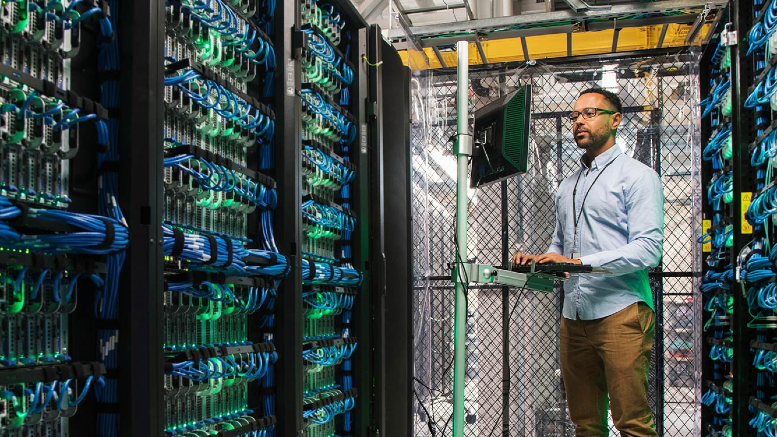Eight offerings higher ed should seek in a device subscription service
August 13, 2024 / Tim Rashkin
Short on time? Read the key takeaways:
- Higher education institutions face unique device management challenges across diverse academic environments.
- Promoting digital equity and inclusion is a crucial mandate for these institutions.
- A device subscription service (DSS) offers end-to-end fleet management, enabling IT to focus on strategic initiatives.
- Selecting the right DSS provider is critical, as they must offer academic-specific services, robust security, and flexible pricing aligned with educational needs.
In today's digital-first academic environment, universities and colleges face unique challenges in managing diverse device fleets for students, faculty and staff. From equipping computer labs to supporting remote learning and cutting-edge research, the demands on IT departments in higher education have never been greater.
Many universities are investing significant time and resources into device management to stay current, while others are falling behind due to budget constraints or lack of expertise. To remain competitive and focus on core educational missions, institutions need a partner to efficiently provision and manage their fleet.
Device subscription services (DSS) handle device management from end to end, keeping your fleet up to date at a lower cost through flexible financing models. DSS offloads the complexities of supply chain management, device tracking and vendor relationships. It also enhances your fleet with features like persona-driven personalization for various academic roles and telemetry-driven insights for improved efficiency. With per-seat pricing models, you pay only for what you need, allowing for easy scaling during peak enrollment periods and downsizing during breaks.
However, not all DSS providers can serve the unique needs of higher education. Here are eight essential questions to consider when choosing the right provider for your institution:
1. What is the range of services?
The service shouldn't just replace your efforts. It should enhance your fleet with support and maintenance, security measures, customization and insights tailored to the academic environment. Look for enhancements like persona-driven device catalogs that ensure students, faculty and staff have the right tools for their roles. You should also review the asset recovery process to see if buyback options are available or if they support donations to students with financial restraints. Other considerations:
- Is the device cycle managed from procurement to deployment, support and retirement across various campus settings?
- Are there fortifications like intelligent refresh planning to align with academic calendars and budget cycles?
2. How flexible are your options?
Device selection and personalization are crucial in a diverse academic setting. Your provider should have a multi-vendor strategy to accommodate preferences across departments and support various academic needs. You should also be able to easily scale up and down to match enrollment fluctuations and special programs. Ask questions such as:
- How extensive and current is their catalog for supporting diverse academic disciplines?
- How does adding or removing users during peak and off-peak periods affect your costs?
3. How much support is provided?
Device management in higher education requires extensive support to avoid interruptions to learning and research. Look into service options, including on-campus personnel and support during key academic periods. Multi-channel offerings like convenient tech cafes and smart lockers in frequently visited buildings and meeting places can provide accessible, efficient support for students and faculty. Consider the following:
- How extensive are the service desk and field support, and what are the response times like during critical academic phases?
- Is there proactive maintenance to reduce potential downtime in labs and classrooms?
- Can students and faculty conveniently access devices on campus with self-service machines or lockers?
- Are IT support stations, such as asset lockers, strategically located near administrative offices (e.g., registrar) to facilitate easy device provisioning during student onboarding?
- Are support services inclusive and accommodating for all students, including those with disabilities or unique needs? How does the provider ensure digital equity and inclusion for every user?
4. How robust are the security measures?
With sensitive research data and student information at stake, security is paramount for educational institutions. You need a provider that offers robust device and data protection options, such as Zero Trust advanced endpoint protection. Look for features that help prevent security breaches from end-to-end and ensure compliance with education-specific regulations. Things to think about include:
- Is there sufficient protection at every phase of the device life cycle, from student laptops to research equipment?
- How is data handled to ensure compliance with regulations like FERPA?
5. Will the solution integrate with your existing IT infrastructure?
Find a provider that can optimize the investments you've already made in educational technology. Consider how the solution will integrate with your learning management system (LMS), IT service management (ITSM) tools, and other relevant platforms. Providers with strong integration capabilities ensure smoother data flow between systems, which allows for end-to-end visibility across your campus IT ecosystem. Consider:
- Does the solution account for your existing educational software and IT systems?
- How much change would be needed to implement the solution in your academic environment?
- Does the solution provide a user-friendly experience for both faculty and students throughout the device life cycle, including easy access to ticket updates, timely notifications and clear status tracking for repairs and replacements?
6. Is sustainability a priority?
Find a provider committed to reducing your institution's carbon footprint while enhancing your sustainability goals. This should cover the entire device life cycle and align with your institution's environmental initiatives. A responsible provider can balance sustainability considerations with the need for cutting-edge technology in education. Ask:
- How committed is the provider to supporting your institution's environmental sustainability goals?
- What practices do they have to control the carbon footprint across the academic device life cycle?
7. Is there global reach and local support?
Evaluate if the provider can offer consistent service across all your campus locations and provide needed local support. This is particularly important for institutions with multiple campuses or international programs. A good provider will be able to operate in multiple countries and time zones while offering on-site support when needed. Consider:
- What is the provider's capability to support multi-campus or global academic environments?
- How available is their local support for on-campus needs?
- How can they minimize the need for heavy-touch involvement, especially during off-hours?
8. What insights and analytics are provided?
Data-driven insights can significantly enhance your device management strategy in the academic context. Look for robust analytics and reporting tools to optimize your device fleet across various departments, predict future needs based on enrollment trends, and inform your educational IT infrastructure. Analytics will help you allocate resources effectively and impact your focus and expenditures. Determine:
- How can the provider's analytics tools help optimize device allocation across academic departments?
- Does the provider offer insights to align device management with enrollment patterns and academic programs?
Device subscription services can offload major burdens from university IT departments and provide predictable monthly costs, flexibility, and optimized user experiences that keep your institution at the forefront of educational technology. DSS also promotes digital inclusion by providing an innovative solution that ensures all students have equitable access to the necessary tools to succeed. It's important to choose wisely to ensure that you successfully increase productivity and reduce costs while meeting the diverse needs of your academic community. Find a provider that goes beyond typical hardware and warranty focus to transform the entire end-to-end device life cycle experience in higher education.
Explore how to transform your approach to campus-wide device management with Unisys.




















